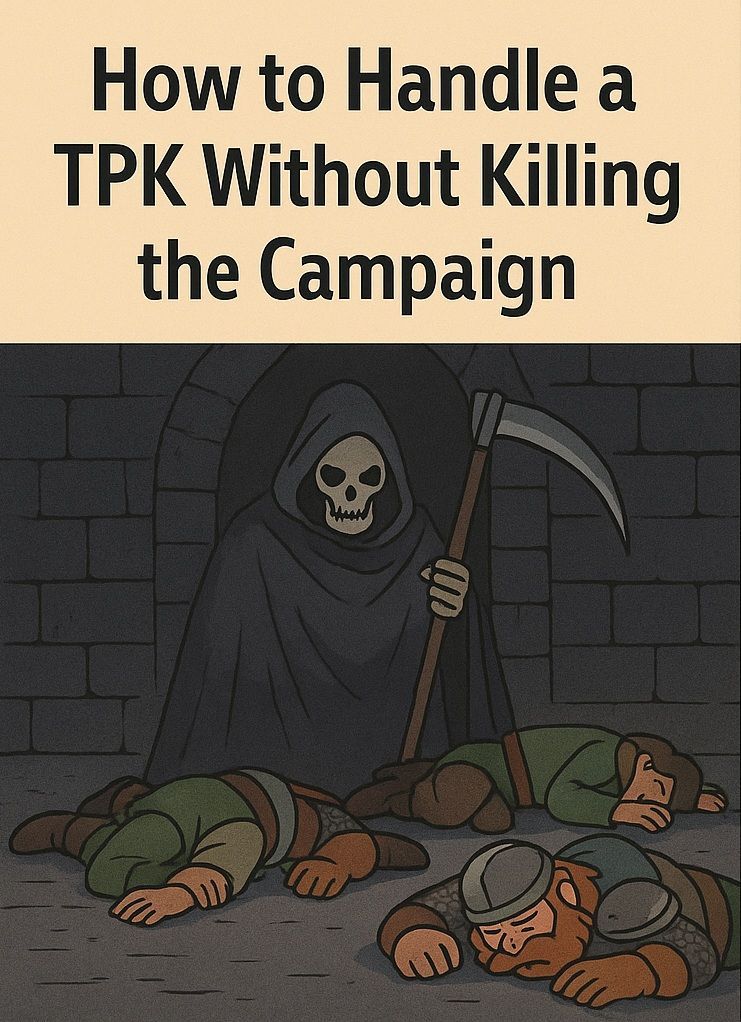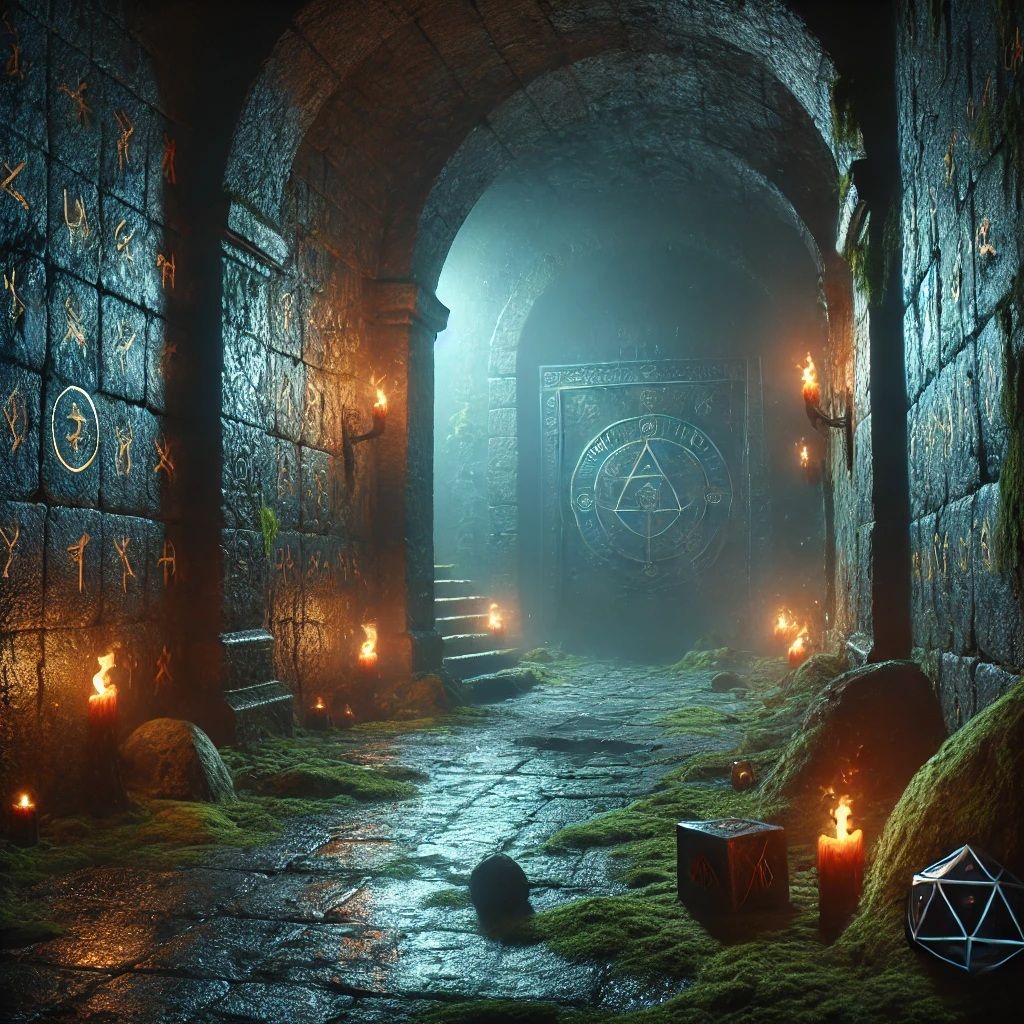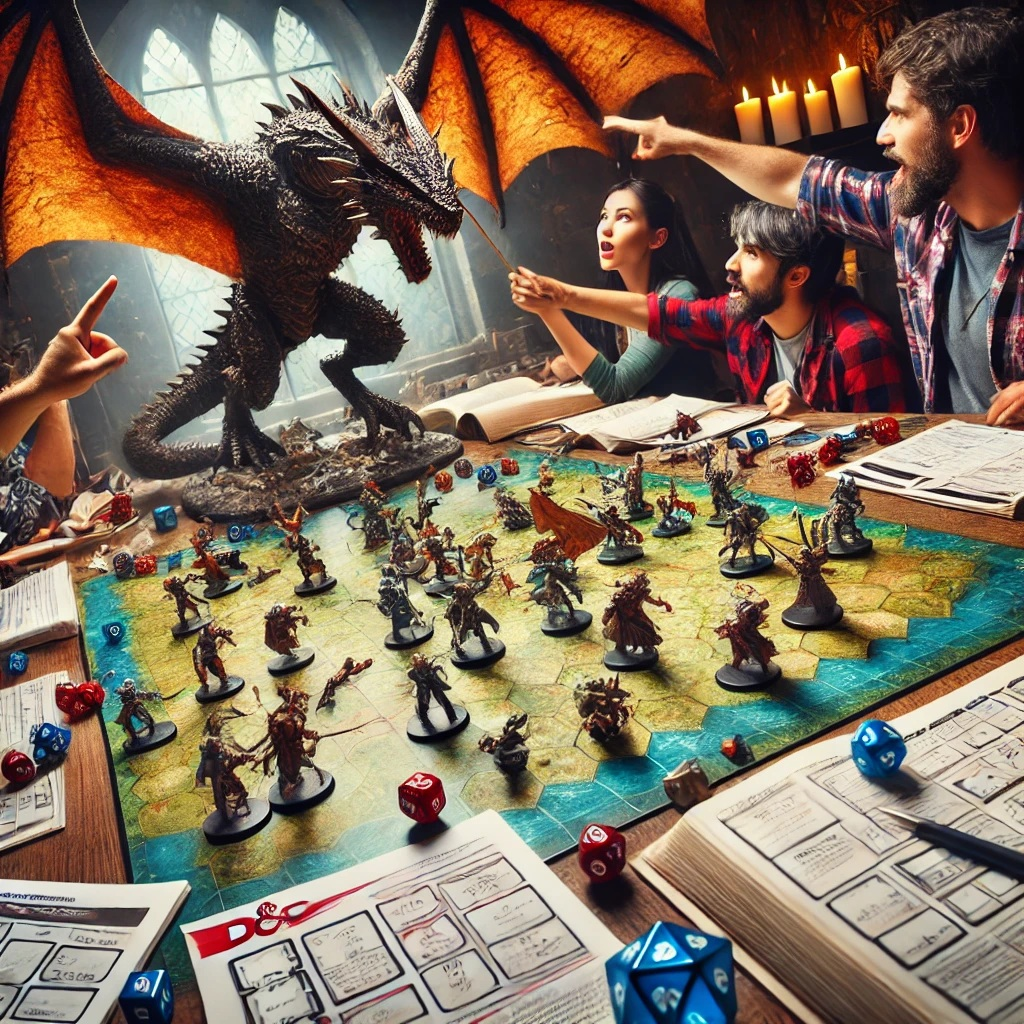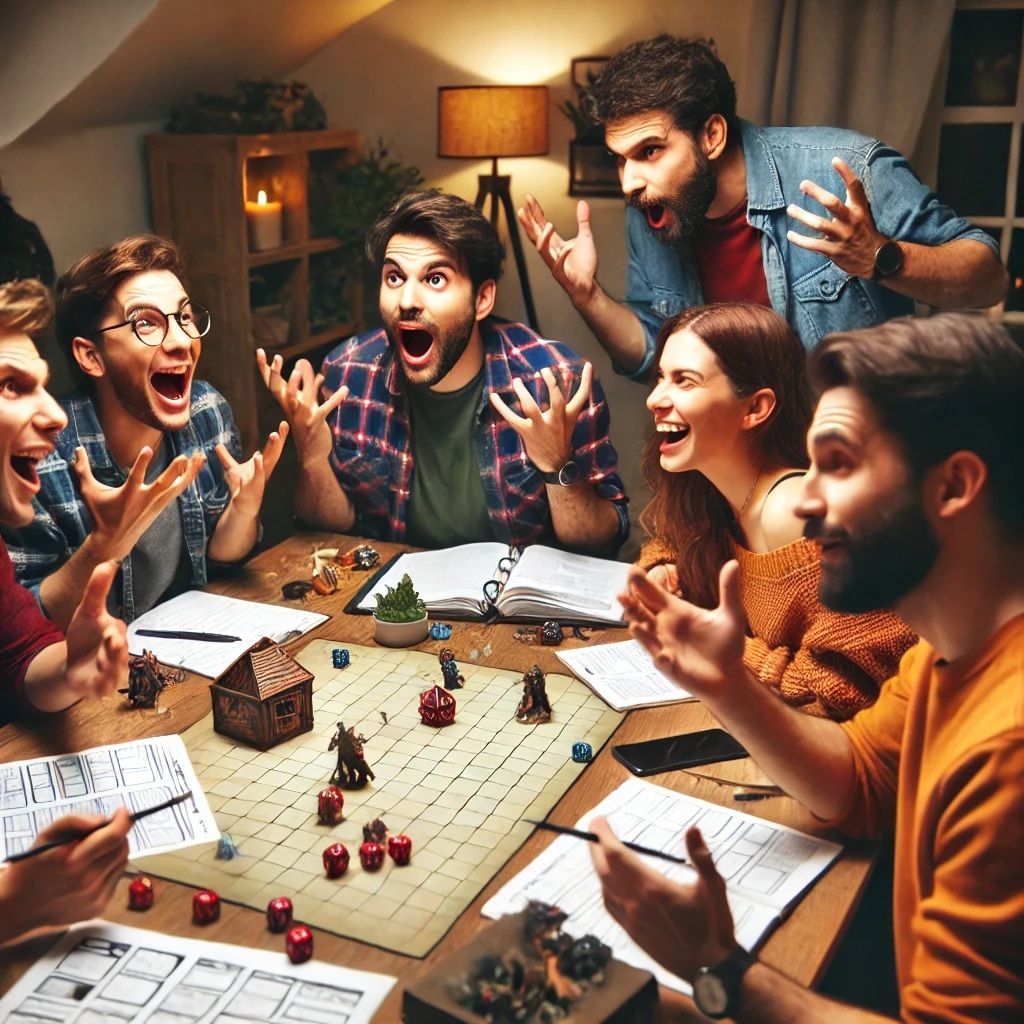Art of the Cliffhanger: Ending Sessions with Intrigue and Excitement

Dear Readers, welcome back to our Dungeons & Dragons (D&D) blog! Today, we’re delving into the captivating art of the cliffhanger—an essential storytelling tool that can transform your D&D sessions into thrilling, edge-of-your-seat adventures. A well-crafted cliffhanger keeps players eagerly anticipating the next session, creates lasting suspense, and enhances the overall narrative experience. In this post, we’ll explore the benefits of using cliffhangers, discuss techniques for crafting compelling session endings, and provide practical examples to inspire your storytelling. So, let’s embark on this journey to master the art of the cliffhanger and leave your players clamoring for more.
The Benefits of Using Cliffhangers
Cliffhangers offer numerous advantages that can elevate your campaign and keep players engaged. Here are some key benefits:
1. Sustains Player Interest
Ending a session with a cliffhanger creates a sense of anticipation and excitement. Players will be eager to return and discover what happens next, ensuring sustained interest in the campaign.
Example: A session ends with the discovery of a hidden door leading to an unknown chamber. Players will be excited to explore what lies beyond in the next session.
2. Enhances Narrative Tension
Cliffhangers introduce narrative tension by leaving unresolved conflicts, mysteries, or dangers. This tension keeps the story dynamic and compelling, encouraging players to think about potential outcomes.
Example: The session concludes with the party surrounded by enemies, and the outcome of the impending battle remains uncertain.
3. Encourages Player Speculation
A well-placed cliffhanger can spark player speculation and discussion between sessions. Players may theorize about plot twists, character motivations, and potential resolutions, deepening their engagement with the story.
Example: The party encounters a cryptic message hinting at a betrayal within their ranks, leading players to speculate about who they can trust.
4. Builds Momentum
Cliffhangers create a sense of momentum by propelling the story forward. Each session builds on the suspense of the previous one, maintaining a dynamic and fast-paced narrative.
Example: The players uncover a map indicating the location of a powerful artifact, setting the stage for an urgent quest in the next session.
Techniques for Crafting Compelling Cliffhangers
Crafting effective cliffhangers involves a mix of planning, creativity, and timing. Here are some techniques to help you create memorable session endings:
1. Introduce a New Threat or Challenge
Introducing a new threat or challenge at the end of a session can create immediate tension and excitement. This could be a powerful enemy, a natural disaster, or an unexpected obstacle.
Example: As the players prepare to leave a dungeon, they hear the roar of a dragon echoing through the halls, signaling the arrival of a formidable adversary.
2. Reveal a Shocking Twist
A shocking twist can leave players reeling and eager to see how the story unfolds. This could involve a surprising revelation, a hidden betrayal, or an unexpected turn of events.
Example: The session ends with the revelation that the party’s trusted ally has been working for the enemy all along, setting up a dramatic confrontation.
3. Uncover a Mysterious Clue
Uncovering a mysterious clue can pique players’ curiosity and drive them to investigate further. This could be a cryptic message, an ancient artifact, or a hidden passage.
Example: The players discover an ancient tome with a missing page that hints at a long-lost treasure, sparking a quest to uncover its secrets.
4. Leave an Action Unresolved
Ending a session with an unresolved action creates immediate suspense. This could be a tense negotiation, a critical decision, or a cliffhanger moment in combat.
Example: The session concludes as a player character is about to open a cursed chest, leaving the outcome and potential consequences unknown.
5. Highlight a Personal Dilemma
A personal dilemma involving one or more player characters can create emotional tension and intrigue. This could be a difficult choice, a moral quandary, or a personal revelation.
Example: A character receives a letter from a long-lost family member, pleading for help, but aiding them would jeopardize the party’s current mission.
6. Use Environmental Hazards
Environmental hazards can create immediate danger and urgency. This could be a collapsing bridge, an encroaching storm, or a spreading fire.
Example: As the players explore an ancient ruin, the ground begins to shake, and the walls start to crumble, forcing them to find an escape route quickly.
Practical Examples of Cliffhangers in Action
To illustrate how you can implement cliffhangers in your campaign, here are practical examples of different types of cliffhangers:
1. The Ambush
Scenario: The players have successfully navigated through a dense forest and are setting up camp for the night. As they settle in, they hear rustling in the bushes and see the glint of steel.
Cliffhanger: The session ends with bandits emerging from the shadows, weapons drawn, ready to ambush the party.
Impact: Players are left in suspense, wondering how they will handle the ambush and what the bandits want. This cliffhanger sets the stage for an intense combat encounter in the next session.
2. The Hidden Chamber
Scenario: The players are exploring a forgotten temple and come across an intricately carved door with ancient runes. They decipher the runes and unlock the door, revealing a dark passage leading downward.
Cliffhanger: The session ends with the players standing at the threshold of the hidden chamber, feeling a cold draft and hearing faint, eerie whispers from within.
Impact: Players are intrigued and curious about what lies in the hidden chamber. This cliffhanger builds anticipation for the next session’s exploration and potential discoveries.
3. The Betrayal
Scenario: The players have been working with a charismatic NPC named Marcus, who has been their guide and ally. During a crucial mission, they receive a coded message revealing that Marcus is a double agent.
Cliffhanger: The session ends with the players confronting Marcus, who smirks and says, “I never thought you’d figure it out,” as he signals his hidden accomplices.
Impact: Players are shocked and eager to confront Marcus and his allies. This cliffhanger sets up a dramatic confrontation and reveals deeper layers of the plot.

4. The Cryptic Message
Scenario: The players find an old, dusty journal in an abandoned library. The journal contains fragmented entries about a powerful artifact hidden in a nearby fortress.
Cliffhanger: The session ends with the players deciphering the final entry, which reads, “The artifact is the key to…,” but the rest of the page is torn and missing.
Impact: Players are curious and motivated to find the missing page and uncover the artifact’s secrets. This cliffhanger drives the next session’s quest and investigation.
5. The Unresolved Battle
Scenario: The players are engaged in a fierce battle against a group of powerful enemies. Just as the tide of battle begins to turn in the players’ favor, reinforcements arrive for the enemy.
Cliffhanger: The session ends with the arrival of the enemy reinforcements, leaving the outcome of the battle uncertain and the players outnumbered.
Impact: Players are anxious to see how they will handle the reinforcements and the ongoing battle. This cliffhanger creates immediate tension and urgency for the next session.
6. The Personal Revelation
Scenario: A character receives a mysterious letter from an unknown sender. The letter contains information about their past and hints at a hidden family secret.
Cliffhanger: The session ends with the character reading the final line of the letter: “Meet me at midnight by the old oak tree if you want to know the truth about your heritage.”
Impact: Players are intrigued and emotionally invested in uncovering the family secret. This cliffhanger creates a personal quest that drives the character’s motivation.
Tips for Effective Cliffhanger Execution
Executing cliffhangers effectively requires careful consideration and planning. Here are some tips to help you create impactful and memorable session endings:
1. Timing is Key
Choose the right moment to introduce a cliffhanger. Ensure that it feels natural within the narrative and comes at a point of high tension or intrigue.
Example: Ending a session right before a major reveal or confrontation heightens the suspense and keeps players engaged.
2. Balance Cliffhangers with Resolution
While cliffhangers are powerful tools, it’s important to balance them with moments of resolution. Allow players to experience the satisfaction of resolving conflicts and achieving goals before introducing new cliffhangers.
Example: After resolving a major quest, introduce a new cliffhanger that sets up the next adventure, giving players a sense of accomplishment while maintaining momentum.
3. Vary the Types of Cliffhangers
Vary the types of cliffhangers you use to keep the narrative fresh and unpredictable. Mix action-oriented cliffhangers with mystery, personal dilemmas, and environmental hazards.
Example: Alternate between cliffhangers involving combat, revelations, and personal story arcs to create a dynamic and engaging narrative.
4. Ensure Relevance to the Plot
Make sure that cliffhangers are relevant to the main plot or character arcs. This ensures that the suspense feels meaningful and integral to the story.
Example: A cliffhanger revealing a new antagonist should tie into the overarching narrative and have implications for the characters’ goals and motivations.
5. Use Cliffhangers to Highlight
Character Development
Use cliffhangers to highlight moments of character development and growth. This can create emotional depth and strengthen player engagement.
Example: A cliffhanger involving a character’s personal quest or backstory can create emotional stakes and drive character-driven storytelling.
Incorporating Cliffhangers into Different Campaign Scenarios
Cliffhangers can be effectively incorporated into various types of campaign scenarios, from dungeon crawls and political intrigue to exploration and mystery. Here are examples of how to use cliffhangers in different scenarios:
1. Dungeon Crawls
Scenario: The players are exploring an ancient dungeon filled with traps and monsters. They find a hidden passage leading to a lower level, rumored to contain untold treasures.
Cliffhanger: The session ends with the players descending into the lower level, hearing the distant growls of a massive beast echoing through the darkness.
Impact: Players are eager to discover what lies in the lower level and face the challenges ahead. This cliffhanger sets up the next session’s exploration and encounters.
2. Political Intrigue
Scenario: The players are involved in a web of political intrigue within a bustling city. They gather evidence of a conspiracy involving a powerful noble.
Cliffhanger: The session ends with the players presenting their evidence to the city’s ruling council, only to have the accused noble walk in with a confident smile, accompanied by armed guards.
Impact: Players are left in suspense, wondering how the noble will defend themselves and what repercussions their actions will have. This cliffhanger sets up a tense and dramatic resolution.
3. Exploration
Scenario: The players are exploring a remote island rumored to contain the ruins of an ancient civilization. They uncover a hidden temple buried beneath the jungle.
Cliffhanger: The session ends with the players entering the temple and finding a massive stone door covered in intricate carvings. As they approach, the carvings begin to glow.
Impact: Players are intrigued and excited to uncover the secrets of the temple. This cliffhanger builds anticipation for the next session’s exploration and discoveries.
4. Mystery
Scenario: The players are investigating a series of mysterious disappearances in a small village. They discover a hidden lair beneath an abandoned house.
Cliffhanger: The session ends with the players descending into the lair and finding a chamber filled with eerie symbols and strange artifacts. Suddenly, they hear footsteps approaching.
Impact: Players are left in suspense, eager to confront the person approaching and uncover the truth behind the disappearances. This cliffhanger sets up a tense and dramatic encounter.
5. High-Stakes Negotiations
Scenario: The players are negotiating a crucial alliance between two rival factions. The success of the negotiations will determine the outcome of an impending war.
Cliffhanger: The session ends with a sudden interruption as an envoy bursts into the room, announcing that enemy forces are approaching the city gates.
Impact: Players are left in suspense, wondering how the negotiations will proceed and how they will handle the imminent threat. This cliffhanger creates immediate tension and urgency.
Managing Cliffhangers and Player Expectations
While cliffhangers are powerful tools, it’s important to manage them effectively to avoid frustration or disengagement. Here are some tips for managing cliffhangers and player expectations:
1. Provide Sufficient Context
Ensure that players have enough context to understand the significance of the cliffhanger. Provide clues and foreshadowing to build anticipation and make the cliffhanger feel earned.
Example: If the cliffhanger involves a betrayal, provide hints and red herrings throughout the session to create a sense of buildup.
2. Avoid Overuse
Avoid overusing cliffhangers, as this can diminish their impact and lead to player fatigue. Use them strategically to highlight key moments and maintain suspense.
Example: Reserve cliffhangers for major plot points, significant revelations, or critical decisions, rather than ending every session with a cliffhanger.
3. Balance Tension and Resolution
Balance moments of tension with moments of resolution to create a satisfying narrative arc. Allow players to achieve goals and experience the payoff of their actions before introducing new cliffhangers.
Example: After resolving a major conflict or completing a quest, provide a moment of respite and character development before introducing the next cliffhanger.
4. Foster Open Communication
Foster open communication with your players to gauge their reactions to cliffhangers and ensure that they are enjoying the experience. Be receptive to feedback and adjust your approach as needed.
Example: After a session ends with a cliffhanger, check in with your players to see how they felt about the ending and whether they have any concerns or suggestions.
5. Plan for Continuity
Plan for continuity between sessions to ensure that the resolution of the cliffhanger feels seamless and coherent. Take detailed notes and prepare for the next session’s developments.
Example: If a session ends with the discovery of a hidden chamber, prepare detailed descriptions, encounters, and potential plot twists for the next session.
Conclusion
The art of the cliffhanger is a powerful tool that can elevate your D&D campaign, creating intrigue, excitement, and sustained player engagement. By introducing new threats, revealing shocking twists, uncovering mysterious clues, and leaving actions unresolved, you can craft compelling session endings that leave players eagerly anticipating the next adventure.
Remember to choose the right moments for cliffhangers, balance tension with resolution, vary the types of cliffhangers, and ensure relevance to the plot. Incorporate cliffhangers into different campaign scenarios, manage player expectations, and foster open communication to create a dynamic and immersive narrative.
Until next time, Dear Readers…
























